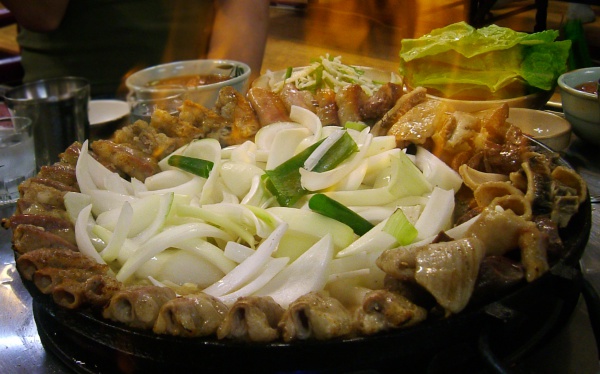Facts About Gopchang
Gopchang is a treasured dish in Korean cuisine, crafted from the small intestines of cattle. This tube-shaped offal is renowned for its chewy texture and rich, elastic fibers. Gopchang can be enjoyed through various preparations, such as stewed, grilled, boiled, or even as sausage.
Historically, gopchang was an economical and nutritious option, rich in iron and vitamins. It was often consumed for its health benefits. In modern times, it has evolved into a delicacy and is now more expensive than regular meat. Gopchang is also a popular choice for anju, or food served alongside alcohol, as it is believed to aid in the breakdown of alcohol in the body. Many foreigners keen on exploring Korean cuisine often consider gopchang a must-try.
The preparation of gopchang involves thoroughly cleaning the intestines and marinating them with ingredients such as garlic, ginger, and Korean pepper before grilling. The marinade typically includes soy sauce, chili powder, rice syrup, and rice wine to enhance the flavor. Grilled gopchang is usually served with a side of salt and sesame oil. The leftover oil from grilling is often used to cook bokkeumbap, a delicious fried rice.
There are several varieties of gopchang, including dwaeji-gopchang (pork small intestines), yang-gopchang (beef blanket tripe), makchang (beef reed tripe), and daechang (beef large intestines). Internationally, gopchang is akin to chitterlings or Latin American chunchullo, demonstrating a global tradition of consuming animal intestines. Additional dishes featuring tripe include stir-fried tripe and gopchang jeongol, a hearty stew.
Whether you're a local or a visitor, gopchang offers a unique and flavorful experience that is deeply ingrained in Korean culinary traditions.

 North Korea
North Korea